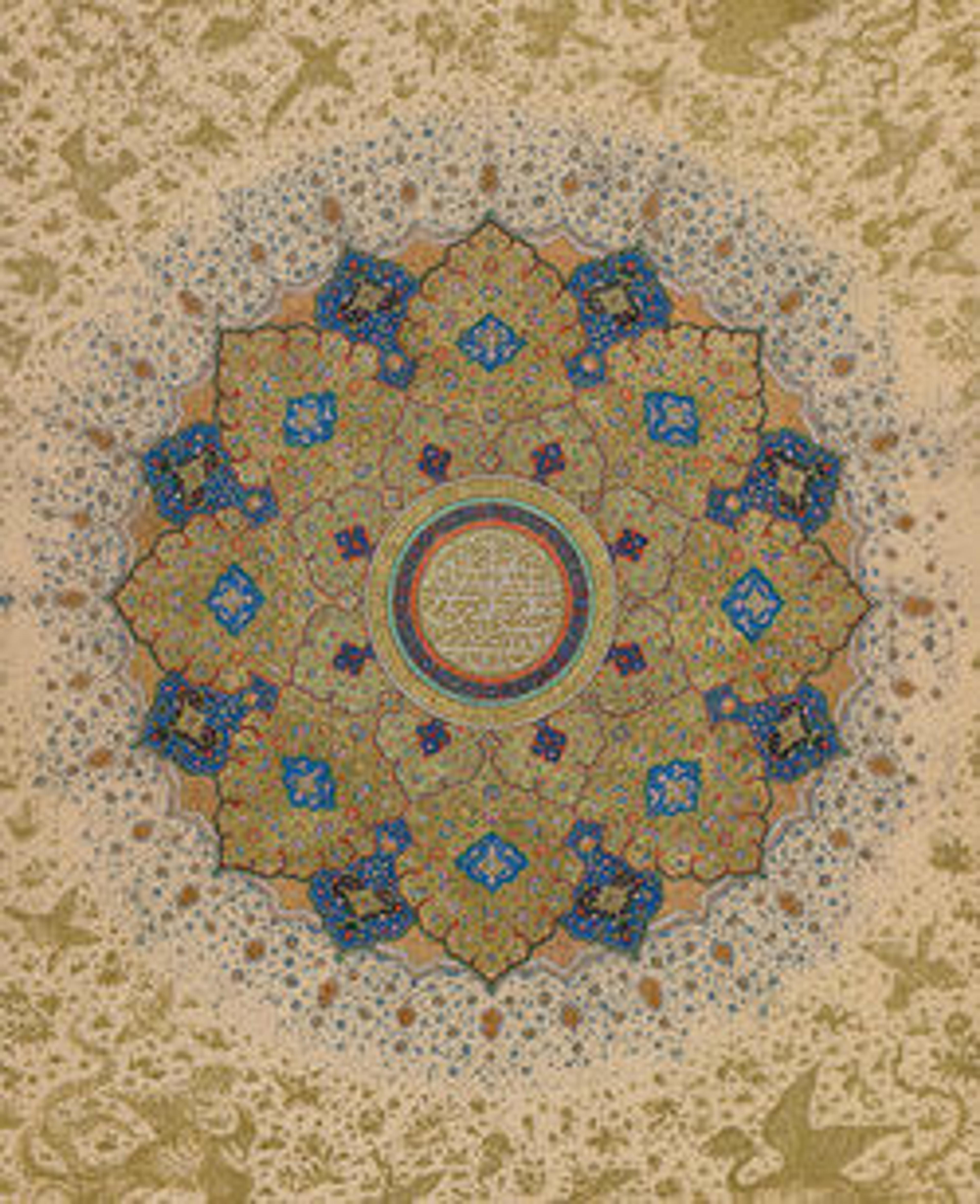Bowl with Eagle
Artwork Details
- Title: Bowl with Eagle
- Maker: Muslim Ibn al-Dahhan (Egyptian)
- Date: ca. 1000
- Geography: Attributed to Egypt
- Medium: Earthenware; luster-painted on opaque white glaze
- Dimensions: H. 2 7/8 in. (7.3 cm)
Diam. 10 in. (25.4 cm) - Classification: Ceramics
- Credit Line: Gift of Charles K. and Irma B. Wilkinson, 1963
- Object Number: 63.178.1
- Curatorial Department: Islamic Art
Audio
6698. Bowl with Eagle, Part 1
NARRATOR: The light-colored bowl with a large eagle inside is an example of luster ware ceramics from Egypt, under the Fatamid Dynasty.
STEFAN HEIDEMANN: It depicts an eagle and, in contrast to what we might have seen in earlier cases, it is much more lively, much more realistic. The tradition of Egyptian painting goes, on the one side, back to Coptic book paintings, and so it connects with the earliest Byzantine and Roman times. On the other hand, it connects to… other Islamic arts. If we look at the wings and at the tail feathers, there's a little strip on it. We find this kind of ornamentational and sometimes inscribed strips and bands on textiles and garments.
ELLEN KENNY: But the style with which it's painted is certainly a more free or painterly kind of hand at work. Now let's look at the lidded container here which is also decorated with luster painting.
NARRATOR: That’s the little brown and white object, with the row of partridges circling the lid. It’s a later piece, from Syria, made from stoneware.
ELLEN KENNY: And I notice that this luster piece is distinctly different tone or coloration than the kind of luster ware that we've been seeing from Egypt.
STEFAN HEIDEMANN: You can achieve different tones of luster by adding more silver oxide or copper oxide. If it's as in the piece from Egypt, more silver oxide in it, it gets much more bright, and much more golden.
NARRATOR: To hear a bit more about the technique and use of Islamic luster ware, press PLAY.
Listen to more about this artwork
More Artwork
Research Resources
The Met provides unparalleled resources for research and welcomes an international community of students and scholars. The Met's Open Access API is where creators and researchers can connect to the The Met collection. Open Access data and public domain images are available for unrestricted commercial and noncommercial use without permission or fee.
To request images under copyright and other restrictions, please use this Image Request form.
Feedback
We continue to research and examine historical and cultural context for objects in The Met collection. If you have comments or questions about this object record, please contact us using the form below. The Museum looks forward to receiving your comments.
